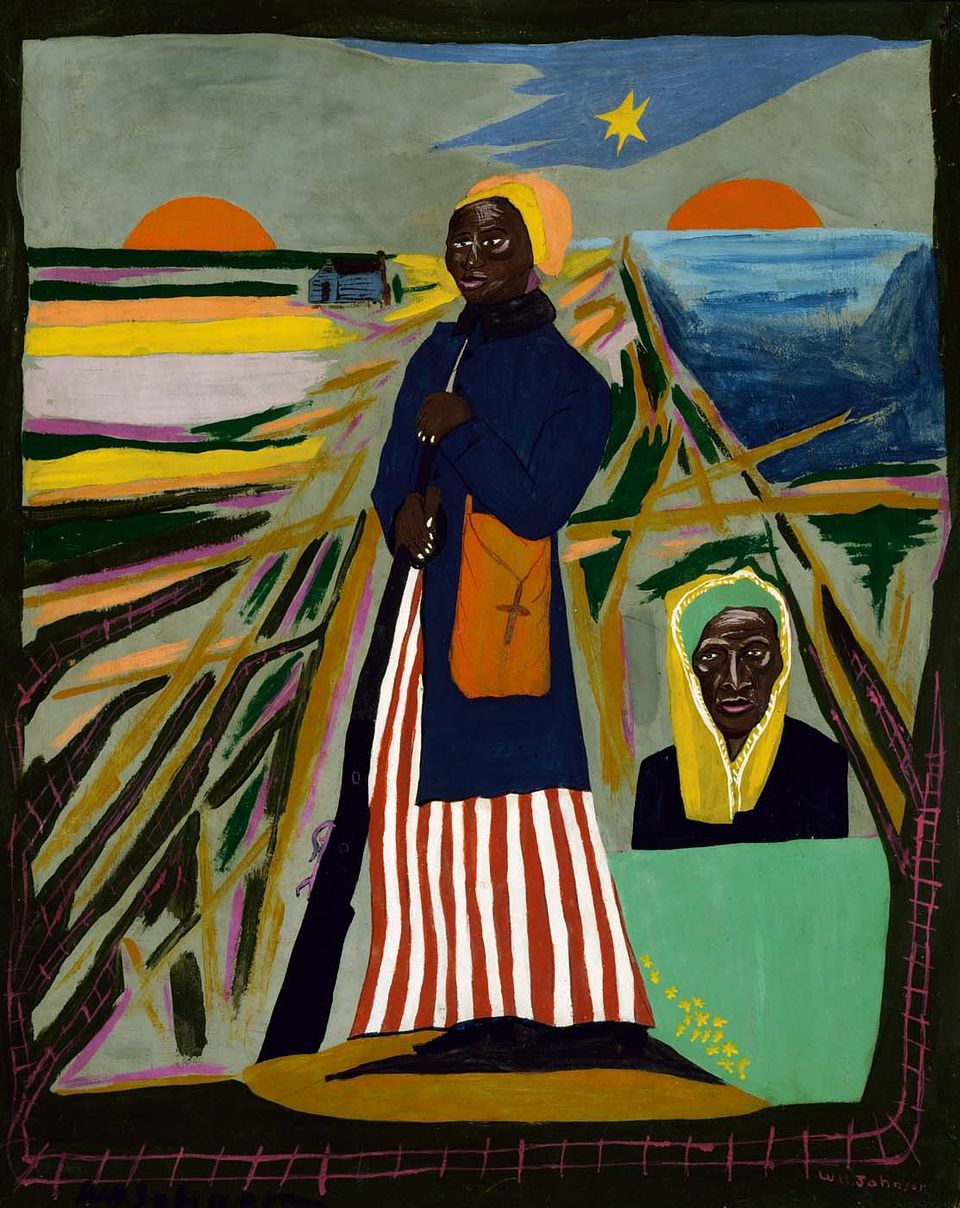Copied
William H. Johnson, Potsdam Meeting, ca. 1945, oil on paperboard, 37 1⁄2 x 28 1⁄2 in. (95.4 x 72.4 cm), Smithsonian American Art Museum, Gift of the Harmon Foundation, 1967.59.655
Copied
Artwork Details
- Title
- Potsdam Meeting
- Artist
- Date
- ca. 1945
- Location
- Not on view
- Dimensions
- 37 1⁄2 x 28 1⁄2 in. (95.4 x 72.4 cm)
- Credit Line
- Gift of the Harmon Foundation
- Mediums
- Mediums Description
- oil on paperboard
- Classifications
- Subjects
- Portrait male — Truman, Harry — full length
- Portrait male — Atlee, Clement — full length
- Object — other — flag
- Portrait male — Stalin, Joseph — full length
- History — United States — Potsdam Conference
- Figure group
- Object Number
- 1967.59.655
Artwork Description
Exhibitions
March 8, 2024–September 10, 2024
William H. Johnson's Fighters for Freedom series from the mid-1940s is a tribute to African American activists, scientists, teachers, and performers as well as international leaders working to bring peace to the world.















